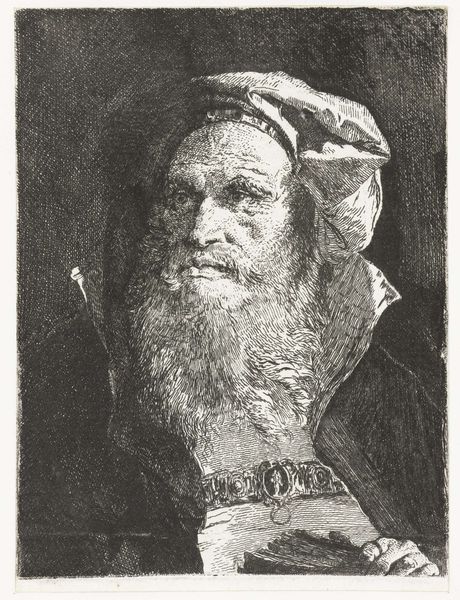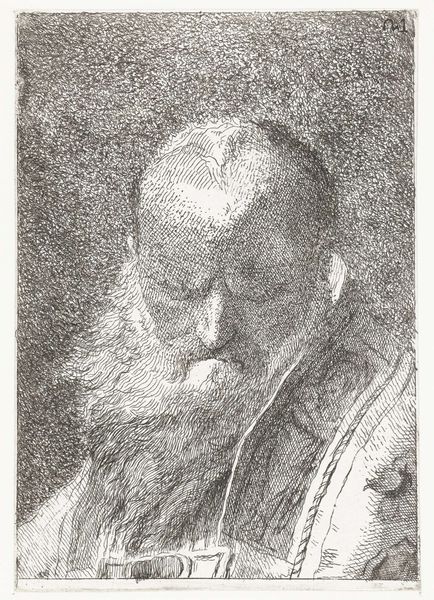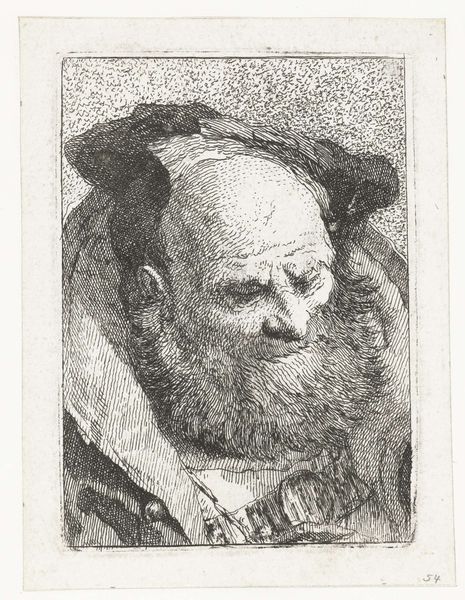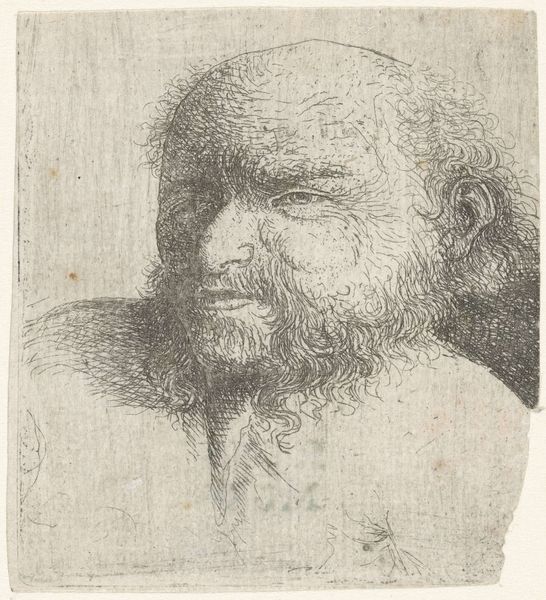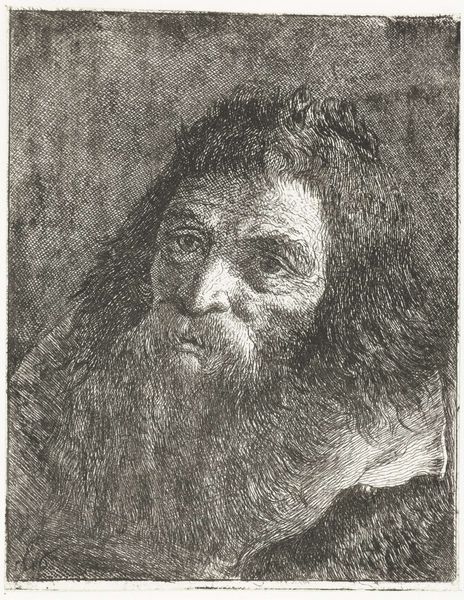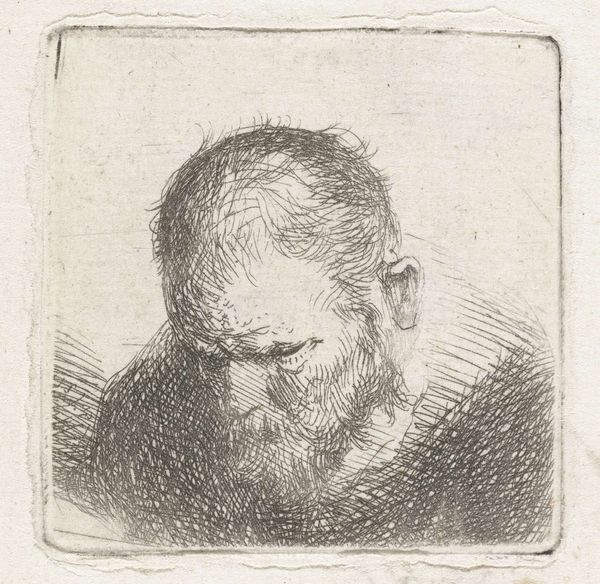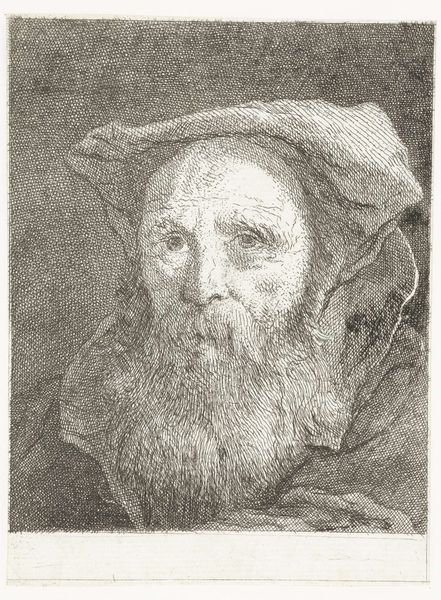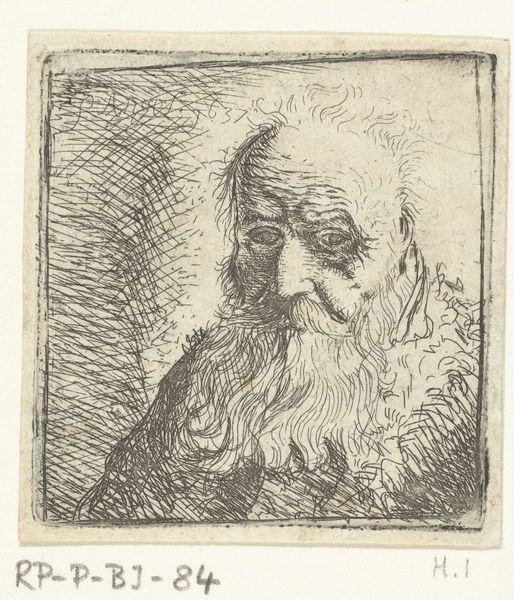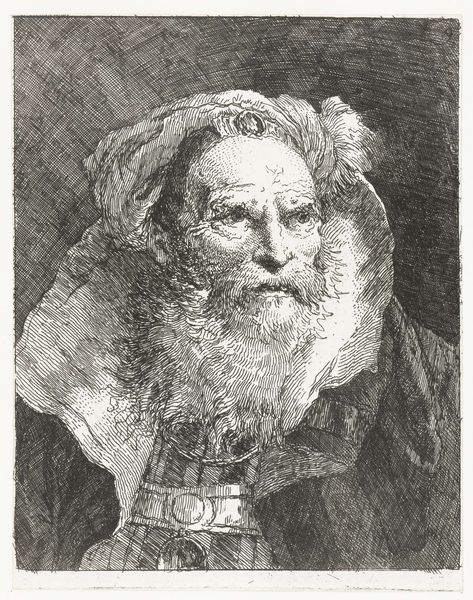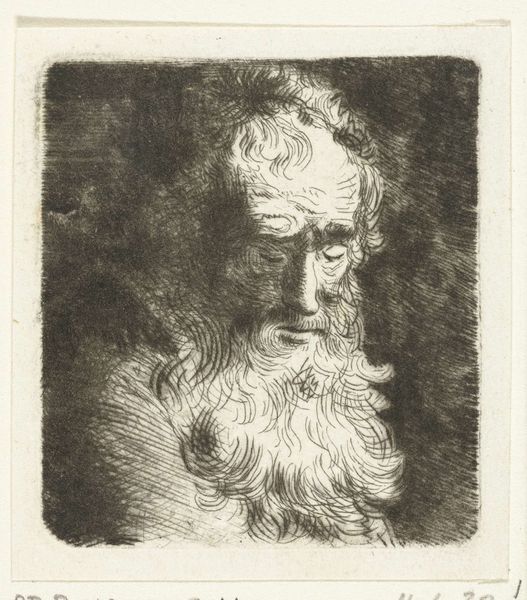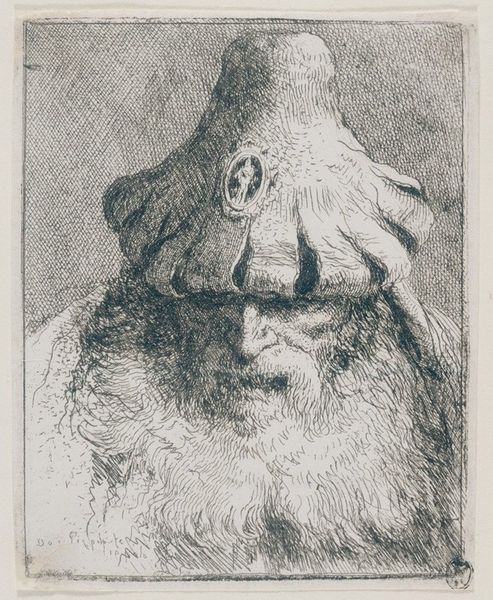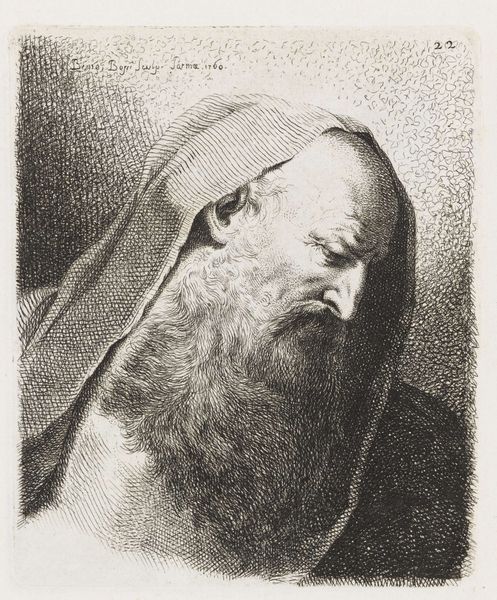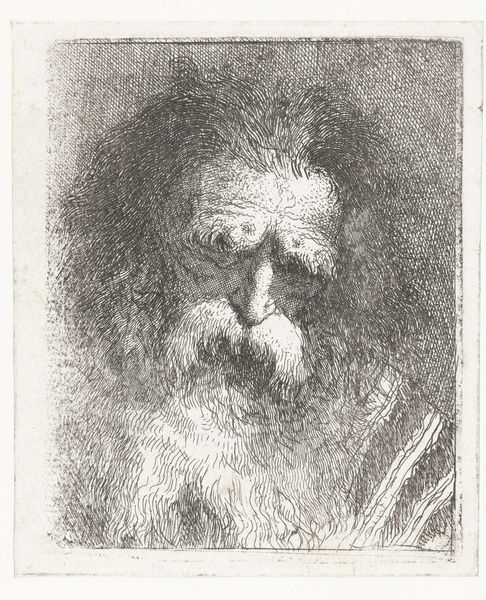
#
pencil drawn
#
amateur sketch
#
facial expression drawing
#
pencil sketch
#
portrait reference
#
pencil drawing
#
pen-ink sketch
#
animal drawing portrait
#
portrait drawing
#
pencil work
Dimensions: height 129 mm, width 98 mm
Copyright: Rijks Museum: Open Domain
Editor: We're looking at "Man met baard in gestreepte mantel," or "Man with beard in striped coat," by Giovanni Domenico Tiepolo, created between 1757 and 1774. It appears to be a drawing, likely in ink. It feels raw and immediate, not overly stylized. What can you tell me about the materiality of this work and its impact? Curator: Well, let’s think about the paper, the ink, and the repetitive actions required to create this image. The line work isn't about replicating reality but revealing the artist's labor, making the process visible. Do you see the different densities of lines? What kind of implications might arise by considering what would have been necessary to do it? Editor: It looks like it's just building up layers of thin lines for shading. I guess doing that would have taken quite a while. Was drawing like this considered skilled labor at the time? Curator: Absolutely! Drawing, especially portraiture, was a commodity. Artists like Tiepolo were essentially manufacturers of images, participating in a system of artistic production and distribution. The skill evident here – the control over the pen, the understanding of light and shadow – represents a significant investment of time and training. The crosshatching technique, demanding immense patience, reinforces this idea of skilled craftsmanship and the art-making process being labor-intensive. Editor: So it is almost more about how the drawing was made and its implications, than what the figure actually is? Curator: Precisely. While the subject matter – a bearded man – is present, a materialist lens compels us to consider the social and economic conditions that enabled its creation. It encourages an examination of not just art, but its status as a consequence of production! Editor: That really gives me a new perspective to appreciate what goes into these drawings and makes me want to consider this aspect for similar artwork! Curator: Indeed. By shifting our focus to process and production, we move away from a solely aesthetic evaluation and toward a deeper understanding of the work’s value within a particular social and economic context.
Comments
No comments
Be the first to comment and join the conversation on the ultimate creative platform.
